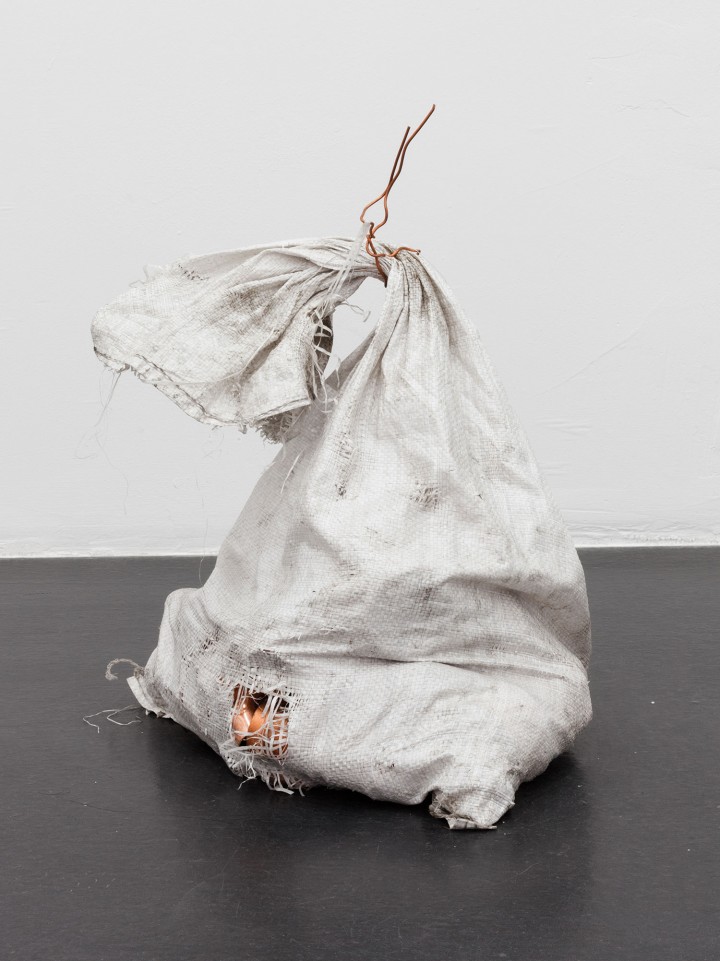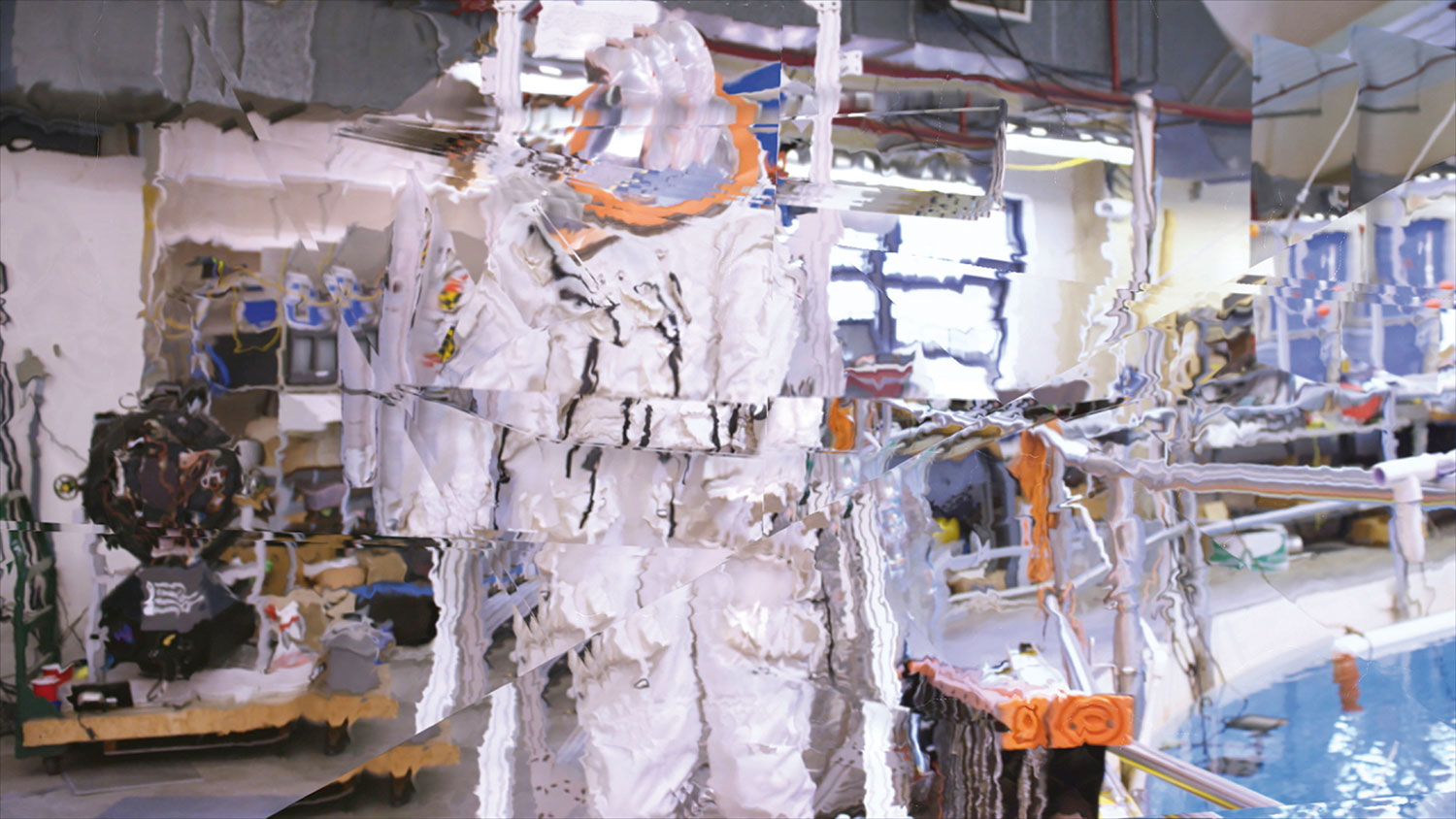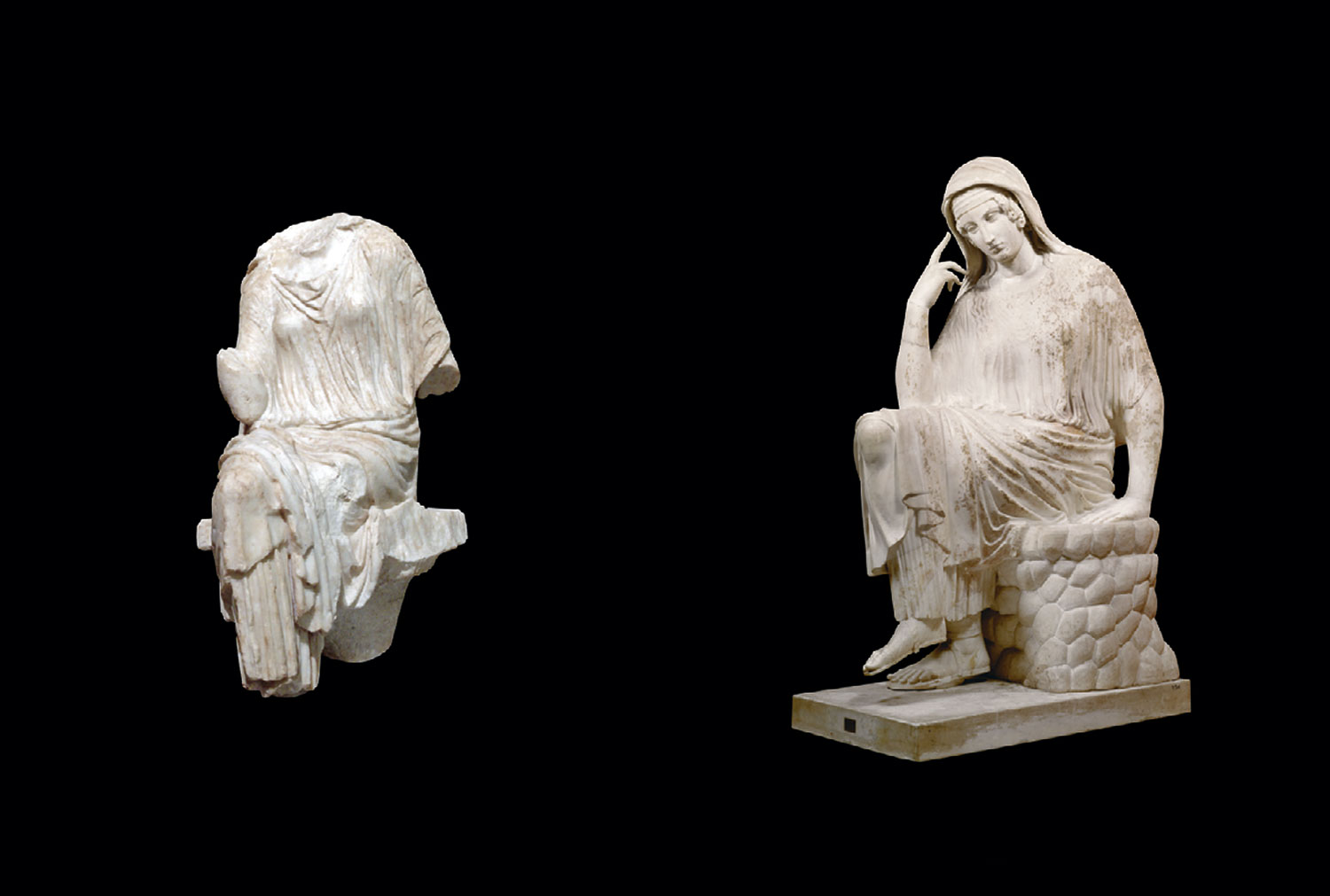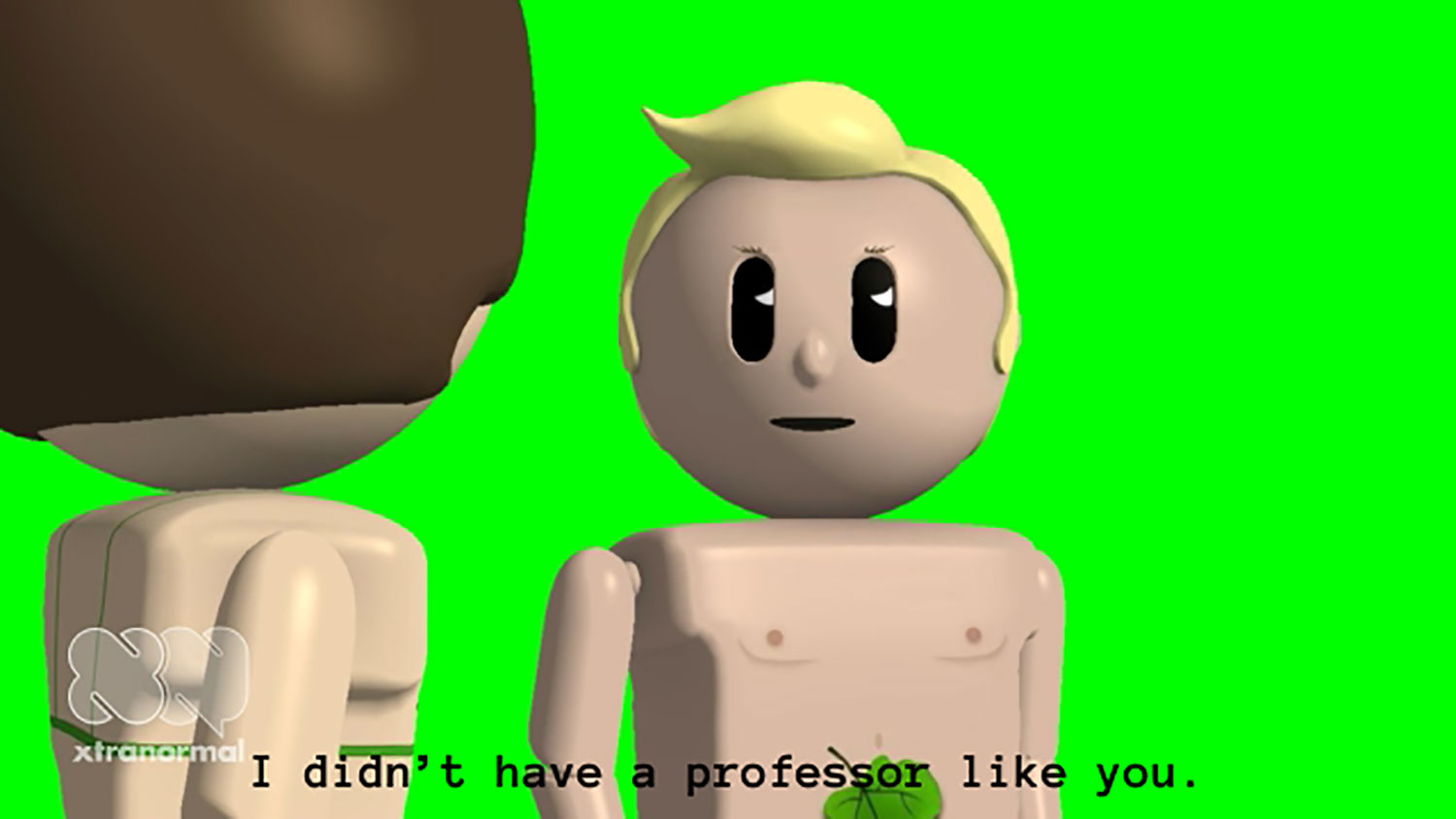
The conceptual work of American artist Cameron Rowland (b.1988, US; lives in New York) assumes a drily treacherous form that is discontinuous with the clouded structural diffusion of our post-digital Zeitgeist. His stripped-down, para-readymades — cast-off machine parts, heavily worked joinery — serve a purposive documentary function that is rigorously informed by the Marxist historical analyses of Allan Sekula and Cedric Robinson. His emergent oeuvre shares a sense of urban anarchy with Gordon Matta-Clark’s exorcised Bronx Floors (1972–73), Klara Liden’s pilfered street furniture, Claire Fontaine’s (more didactic) anti-social interventions, and Cady Noland’s wrecked manifestations of masculine malcontent. That Rowland rarely fabricates any new thing indicates an intimate familiarity with the vast secondary markets of a shadow industrial economy. He institutionally frames banal objects with questionable origins, let alone explicit uses. But his authorial non-production should not be construed as a studied refusal. In fact, the performance of resource plundering — to provide a content for “art” — subversively mirrors the ongoing capitalization of social life and welfare throughout the West, while riffing on the artist’s own procedural “de-skilling” and even implicating would-be collectors and institutions in legitimately exploitative trade. To the extent that Rowland’s works engage sites of exchange (the dollar store, the civic bureau) and are themselves dispensed (or else removed) from circulation according to the prescription of various macroscopic policies, his close examination of received standards stresses the deeply rooted injustice of American exceptionalism, drawing attention to the structural artifice of the white cube and the system of white-supremacist patriarchy in which the whole of high cultural production is circumscribed. (Philanthropy is the main revenue stream for the arts in the U.S. Andrea Fraser: “Many of our patrons are actively working to preserve the political and financial system that will keep their wealth, and inequality, growing for decades to come.” [“L’1%, c’est moi”])
Rowland’s installations and object groupings have masqueraded as more politely minimalist than the above roster of post-punkisms; as did the single eggshell-colored steel rod orphaned from a Lozier modular shelving system — U66 (2013) — bracketed to the wall for an austere group exhibition (“Conspicuous Unusable,” 2013) at the Miguel Abreu Gallery. The resistance of this particular piece to critical legibility beyond an aesthetics of post-industrial decrepitude (for instance, as keen dismemberment of a capital-efficient mass-market standard) is the same tension that permeates his assortment of diversely acquired or jerry-rigged forms. Because the works are accompanied by extended captions outlining their typical use (and often re-use as illicit currency), the sense of ontological obscurity is not deliberate. Rather, their low-level signification reinforces the detached onlooker’s ignorance of the sinister fixtures that divide and structure everyday experience. The conventional partitions Pass-Thru (a rotating tray housed in plexiglass and stationed at the point-of-sale in late-night markets and liquor stores) and Deal Tray (the stainless steel depression beneath the bulletproof pane of a bank teller window; both 2013) limit contact between nonequivalent parties, and fail to yield much of this “street identity” in the rarified space of the gallery. As discovered casually abutting the baseboard at Bed-Stuy Love Affair (a scruffy artist-run space in Brooklyn), the Deal Tray lost its transitional efficiency even as its (negated) structural specificity came to light. Rowland seeks to render long-incorporated social configurations plainly visible — the consumer-borrower as dangerous, potentially armed — a necessary articulation for any ambitious project of twenty-first-century cultural politics.

Theft as work
For his 2014 solo debut in New York City, at Essex Street Gallery, Rowland presented a cluster of items derived from the extra-legal practice of parts and materials stockpiling, which spiked after the 2008 financial crisis when both the need for hard currency and the number of vacated homes increased proportionately to global infrastructure development. Critical infrastructure in the U.S. — electrical sub-stations, telephone lines, railroads, water, tornado warning sirens — was implemented through public financing. While the privatization of utility companies that control resource flows is seen as a necessary corrective — as if a profit motive ensures innovation — the lone, non-consensus-driven agent denied “public” access (through lack of property ownership) yet seeking surplus value from the same framework is broadly perceived as breaching the public trust. This cognitive dissociation between personal and corporate accountability can be attributed to economies of scale and endemic cultural loathing for the distressed. Because the removal of copper cable risks immediate consequence — for example, the 24-hour debilitation of all 31 miles of the MTA subway’s A-train line, due to a theft near Howard Beach, Queens, in May of 2015 — the offender furnishes a cause; whereas the long-term effects of neoliberalization rarely provide a singular, spectacular event, and so cannot be as effortlessly pegged. Rowland’s “sculptural” series Loot (2013–14) displayed variously rated denominations of cut and dented copper tubes as purchased by the artist from a small scrap yard. (A woven sack clinched by a twisted strand of copper wire is still on view in “Slip of the Tongue” at Palazzo Grassi, Venice.) A badly dimpled baseball bat was procured from a parallel market in hoarded aluminum. Several unadulterated catalytic converters hung preciously like postmodernist metal assemblage sculpture (49, 40, 6, 2014), or rested artlessly on the floor (255, 155-175, 10, 2014). Once seized from an unsecured Volvo or broken-down Toyota Highlander, elsewhere these works would be appreciated for their rhodium, platinum, and palladium; and here sustain a threat to private property.
Handpunch (2014–15), shown at the Albright-Knox Art Gallery in Buffalo (“Overtime: The Art of Work”), examines the criminalization of marginal persons from within the “legal” commercial sector. Each close-up color photograph in the series focuses on a particular computational device. In a variety of locations, a rack of polyester school uniforms, headphone display, or stacked toothpaste tubes nestle tightly within the frame, distorting spatial perspective and demonstrating the ubiquity of the machine’s employ. The Schlage HandPunch® relies on biometric data such that hourly wages are not issued falsely to the advantage of labor. Punching in was previously a rote mechanical operation (and depersonalized, as in the performance work of Tehching Hsieh), but now the process brings criminal indexing technology to the workplace, shifting the burden of proof for “on the clock” hours to the individual. This juridical realism is not specifically illustrated in Rowland’s images, which make no extensive truth claim, though the representations suggest low-skill and minimal wages. In a precarious system in which workers have few protections, and wage theft is rampant, the potential for manipulation by the class of owners — preconditioning the labor relation as disreputable — is significant.
Zero Tolerance (2015) takes up New York City Police Commissioner Bill Bratton’s “broken windows” approach, a political strategy which all but eradicated “squeegee men” from the streets of Manhattan in the mid-1990s by prosecuting the solicitous vocation (wiping the windshields of passing motorists paused at intersections) as a low-level offense. Even under the guise of productive (if unregulated) labor, illicit activity is presumed, not least as hampering property value. The plainness of Rowland’s bucket and squeegee tool neither idealizes pre-Giuliani New York City nor the certain persons excluded by pro-development policies (or worse, captured by the criminal justice system). Instead, meager plastic and rubber materials belie clear justification for state sanctioned violence — exposing urban “street sweeping” as an economic, rather than ethical, imperative.

Lease option
For Benjamin Buchloh, the “administration” of the readymade after Duchamp transformed the function of institutional validation (for conceptual art) into a “discourse of power”; legal contracts would later expose the contingency of art objects not specifically engaged in such debates — only implicated by them through commercial sales and the partial transfer of ownership. While the art acquisition process is subject to further complication today (the influx of finance capital, globalization, a booming market), Rowland’s critique of private property and historical socioeconomic disparity has also obstructed full possession of his work outside the norms of trade in art. A rental agreement capriciously attached to certain of his objects (rather than a work in its own right) borrows its language from predatory rent-to-own enterprises that lease electronic devices, sofas and other premium goods to consumers (without access to credit) at measurably exorbitant rates, were any term carried to conclusion. Rowland’s document allows for the temporary custody of artwork by a collector (to display, and loan) for a monthly fee, on the condition of its return after an agreed duration. By withholding the right to permanent ownership, this tenacious arrangement resists certain forms of surplus value accumulation (for both the artist and any purchaser) and has yet to find a willing lessee. By contrast, the assembled hardware fixture Intermediate Preventive (2013) can be obtained, but its sale does not include all component parts. The conduit’s armored cable secures an uninterrupted flow of electricity along the exterior of a building, to a light or surveillance camera, and is modeled on those found on NYCHA premises. (Properties owned by the New York City Housing Authority are home to more than 400,000 low- and middle-income New Yorkers.) Instead of forestalling theft, the steel casing thwarts disruption of regulatory scrutiny or illumination of the property boundary. Preventive theoretically includes a high-pressure sodium light pack that is denied in transaction, as a formal disarticulation of the apparatus and defense against actual use.
The titular work of Rowland’s Essex Street solo, Bait, Inc., 2014, engages the shifts in government funding to low-income areas since the 1996 passage of the Welfare Reform Act through a process of legal incorporation. Because of the ideological tenor of economic stratification in the U.S., state-sponsored programs have been rapidly colonized by neoliberal schemes that translate the toxic rhetoric of public assistance into the language of urban regeneration. The Community Development Entity (CDE), formed by Rowland, is a financial organization under the aegis of the New Markets Tax Credit (NMTC) Program administered by the U.S. Treasury Department’s Community Development Financial Institutions (CDFI) fund. This status allows for CDFI-approved raising of capital in qualified equity investments (QEIs) for high-percentage distribution (often in the form of low-cost loans) to low-income businesses in low-income communities. Investors are protected from risk by federal tax credits totaling 39% of the original investment, recouped over seven years: an unequivocally high rate of guaranteed return. So while the NMTC program stimulates capital flow to cash-strapped and credit-poor communities via the shareholder class, who receives a clear financial benefit, it prioritizes commerce (groceries, pharmacies) over social and civic need (schools, libraries, healthcare, transportation) without expressly improving the purchasing power or livelihood of prospective low-income consumers. By routing federal funds to the private sector, the NMTC claims to implement a program of mutual beneficence that impedes direct monetary investment and parasitically operates on borrowed public subsidies. The inoperative Bait, Inc., successfully demonstrates the ease with which one might destructively navigate a nominal vetting process in the culturally entitled pursuit of investment profit.

Delegated manufacture
Rowland’s interest in the dispersion of the public sphere has lately sparked an investigation into the peculiar production of its equipment, which he traces to antiquated ventures such as convict leasing that relied on a crucial constitutional exception still extant in the expanding prison-industrial complex. (Convict leasing was lucrative in the South after the American Civil War, 1861–65, when vagrancy laws and patently racist Black Codes, barring employment, ensured a steady pool of penal laborers at a state’s disposal for constructing railroads, coal-mining, deforestation and other infrastructural projects. The thirteenth amendment officially banned slavery “except as a punishment for crime…”) Through a government-contracted auction website pitched to private consumers, the artist acquired the pair of chrome and ply tables 49-51 Chambers Street – Basement New York, NY 10007, 2014, and a third of similar composition designated the same title. They are divided according to purchase lots and named by the building address and level of provenance. Because government office furniture is manufactured in state (Corcraft, in New York) and federal (Unicor, a major U.S. military supplier) prisons, in artistic terms, Rowland might be said to have “outsourced” production to an ethically ambiguous manufacturing process straddling neoliberalism’s public-private partnerships: suggesting reform through skill-training and sentence reduction, in exchange for criminally cheap industrial labor. Federal law prohibits domestic commerce in prison-made goods, which is why they instead circulate through branches of the “public” sector — providing a grim view of American society’s enduring reliance on inequity. Due to the embargo on domestic trade, Rowland was only permitted to acquire his manufactured movables second-hand. But as inmate labor has expanded, so too has its qualified markets, now extending to registered non-governmental non-profit entities. For an upcoming presentation at the CCA-Wattis Institute in San Francisco, and constituting a portion of his 2016 solo exhibition at Artists Space in New York, Rowland has exploited this discretionary loophole to access a strange selection of hand-crafted goods borne from the institutionalized abuse of a fraudulent social contract. Whether they will strike viewers as merely aesthetic, mundane or terrifically chilling depends on one’s capacity to recognize the soft material of social reality and to consider, pace Max Weber, the immanent potential in a general “disenchantment of the art world.” Rowland offers critical evidence in place of willed symbolism.
If value production in contemporary art occurs in excess of raw material, through institutional, critical and commercial collusion — not excluding cultural bias and personal charisma — Rowland does not precisely contradict the property system of this specialist market on its own terms. Skirting full recognition of the dark social forces engendered by his found and reconstituted works (via an unwitting audience) still does little to dissolve their thoroughly embodied menace, which remains incorrigible through continuous conventional application in the so-called real world. Yet the syncretic shunting of base material — public and private assets already stripped once- or twice-over — through high cultural circulation channels radically undermines the romanticism of art’s freedom from the social. And the commingling of his super-regulatory fixtures with less aggressive art forms often results in a novel reflexivity: for an inaugural display of literary ephemera by the French cult author Raymond Roussel at the Buchholz Galerie’s New York outpost (supplemented by a selection of artworks), Rowland installed an exit height strip (7.5’, 2015) flush against the street-facing doorframe. Typically used in connection with surveillance tape to identify, by size, probable suspects accused of stealing from convenience stores, the strip here composed a wry critical framing device for the inevitable act of aesthetic (or intellectual) appropriation upon leaving the exhibition. If we follow the artist’s careful reckoning of linguistic determination before the law, and the specific privileges its expression confers or disallows, we could also begin to qualify such tendencies, plainly, as “thievery.” Or we might just recall the codependency of capitalism and crime, and Pierre-Joseph Proudhon’s proclamation of property itself as theft.





